Pickled Asparagus
This post may contain affiliate links. See my disclosure policy.
This Pickled Asparagus recipe is easy to make and the end result is positively irresistible. They’re zesty, tangy, crispy and absolutely delicious in salads, on charcuterie boards and just for plain snacking!

We started growing asparagus in our garden a few years ago it’s something I look forward to every spring. Steamed and served with a Hollandaise sauce, sauteed with butter, added to stir-fries, made into a creamy soup, roasted or grilled and added to a Mediterranean salad…I love asparagus every which way. And that includes pickling.
Pickled asparagus is delicious for snacking on its own. But my favorite way to enjoy it is alongside a cheese and charcuterie board or antipasto platter. The pickled asparagus adds both the sour/salty element as well as that crunchy texture that so perfectly complements the cured meats and aged cheeses.
To learn everything you need to know about making one, check out our post on How To Create a Cheese and Charcuterie Board.

Pickling is also a great way to extend the shelf life of asparagus. In fact, it’s best eaten at least a week after it’s been pickled.
You’ll probably wish you had made a double batch so that you can give some away to family and friends who will think you’re the absolute bee’s knees. It also makes a great hostess gift.
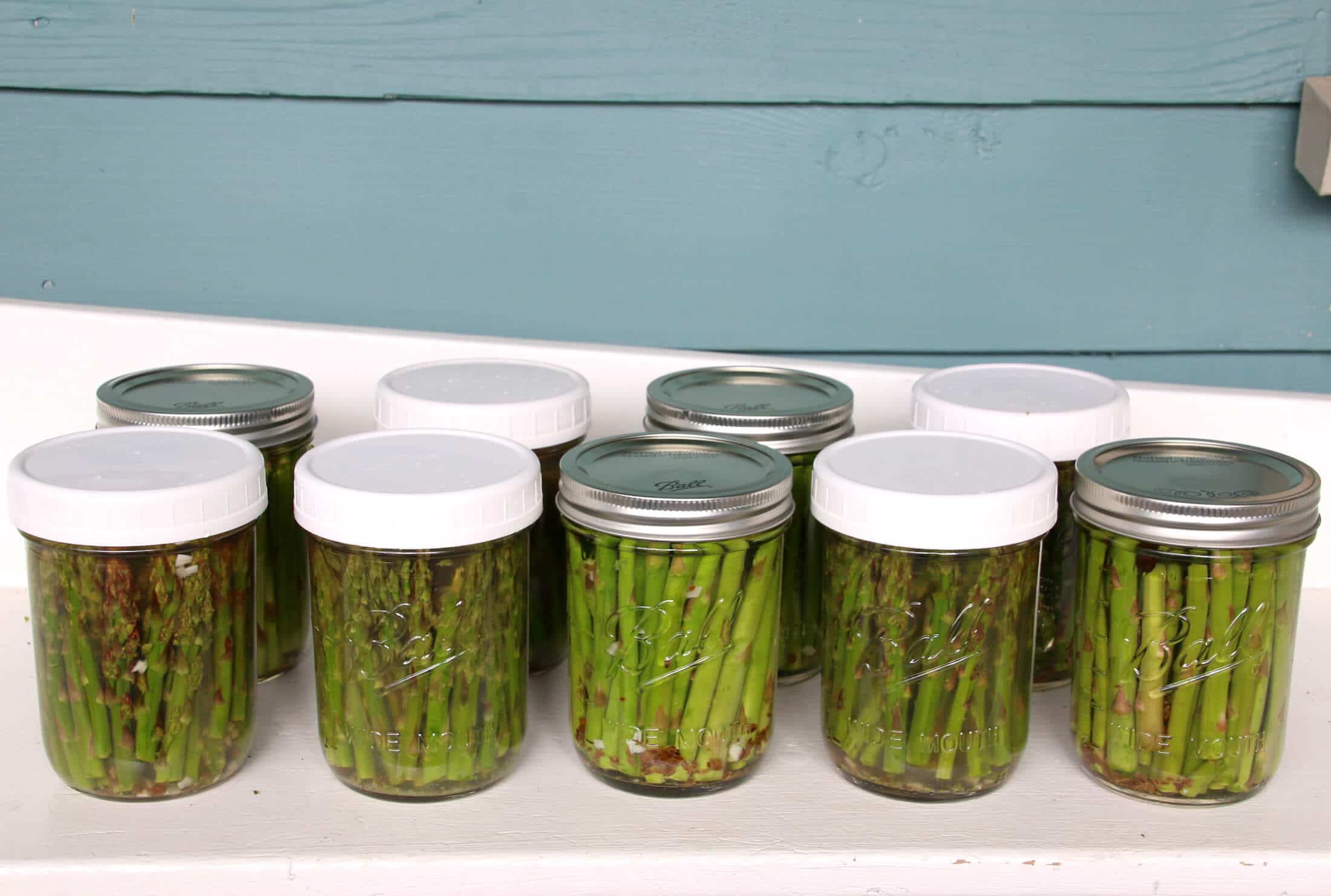
Pickled Asparagus Recipe
Let’s get started!
Select the freshest asparagus you can find. I usually aim for medium to thick asparagus so that they maintain they’re crunch, but I gladly use whatever’s available.
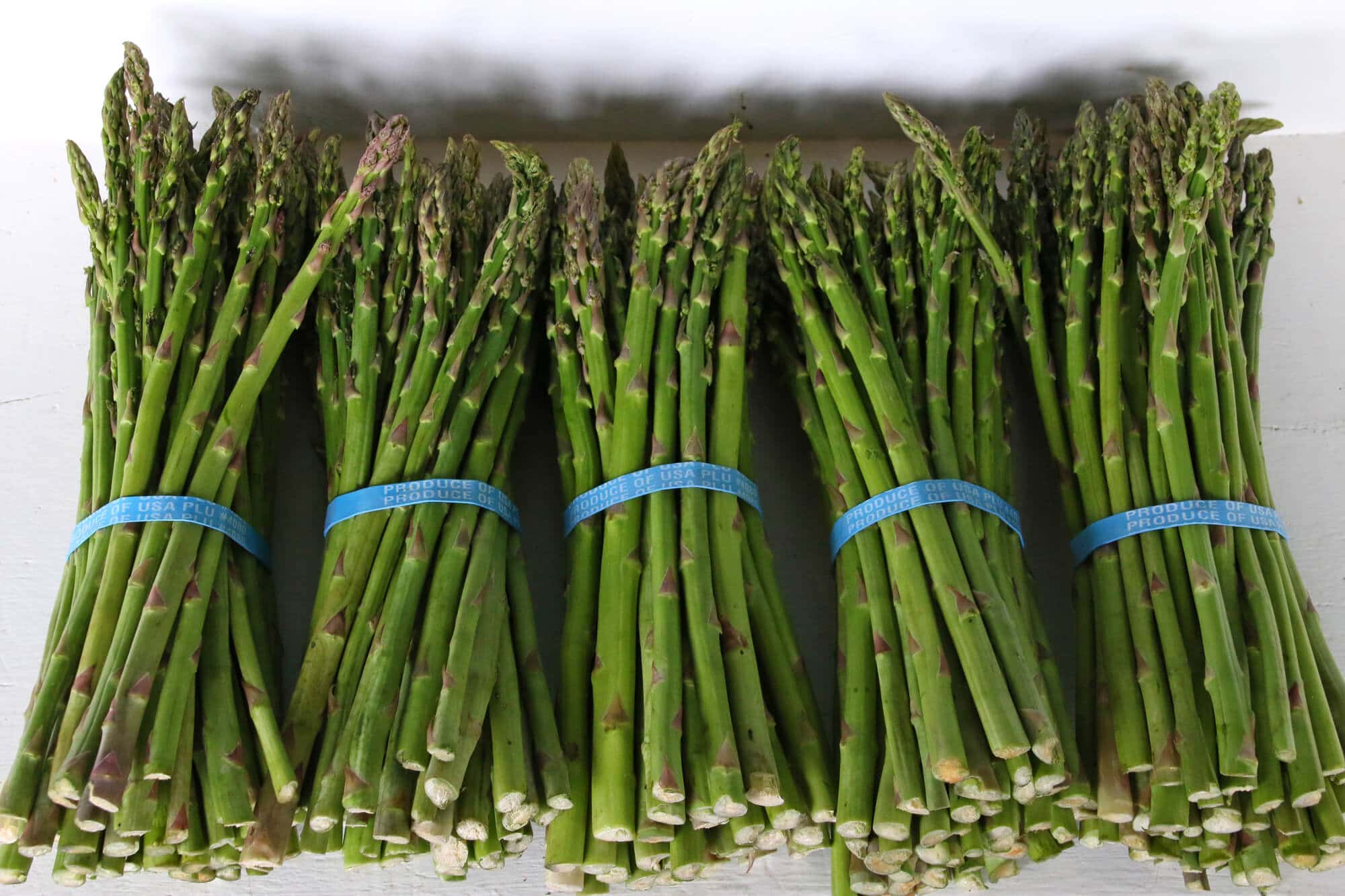
Wash the asparagus, trim off and discard the ends, and cut them to fit the length of whatever jars you’re using, leaving 1/4 inch headspace from the top of the jar. If you’re using tall jars you can use long asparagus spears. If you’re using shorter jars, like pint-sized jars, you can cut them in half.
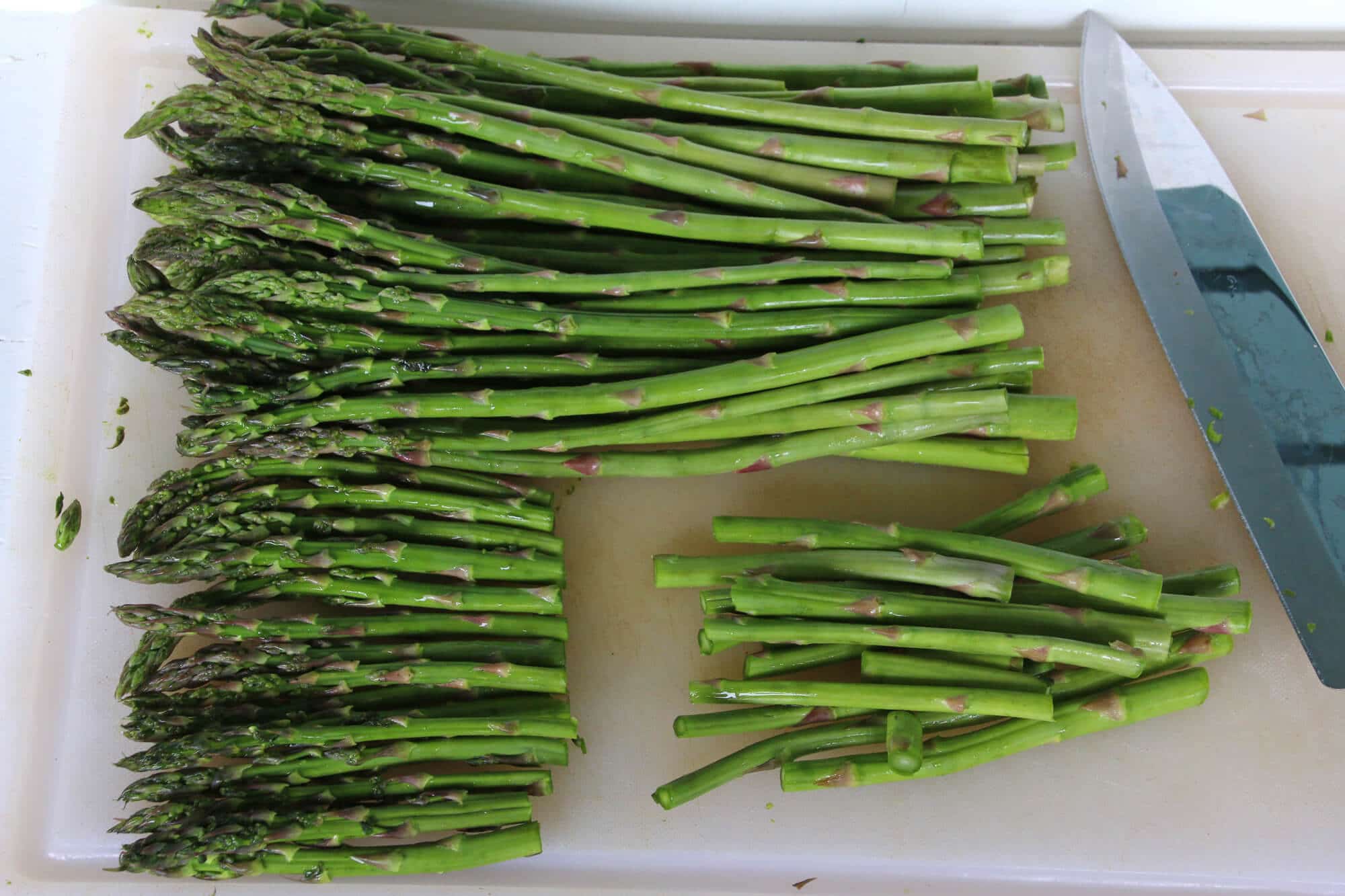
Pack them into sterilized jars as tightly as you can fit them. You may need to do some more trimming to ensure that there’s 1/4 inch headspace from the top.
You can either combine the heads and stems or keep them separated in different jars so you can reserve the best for your guests.
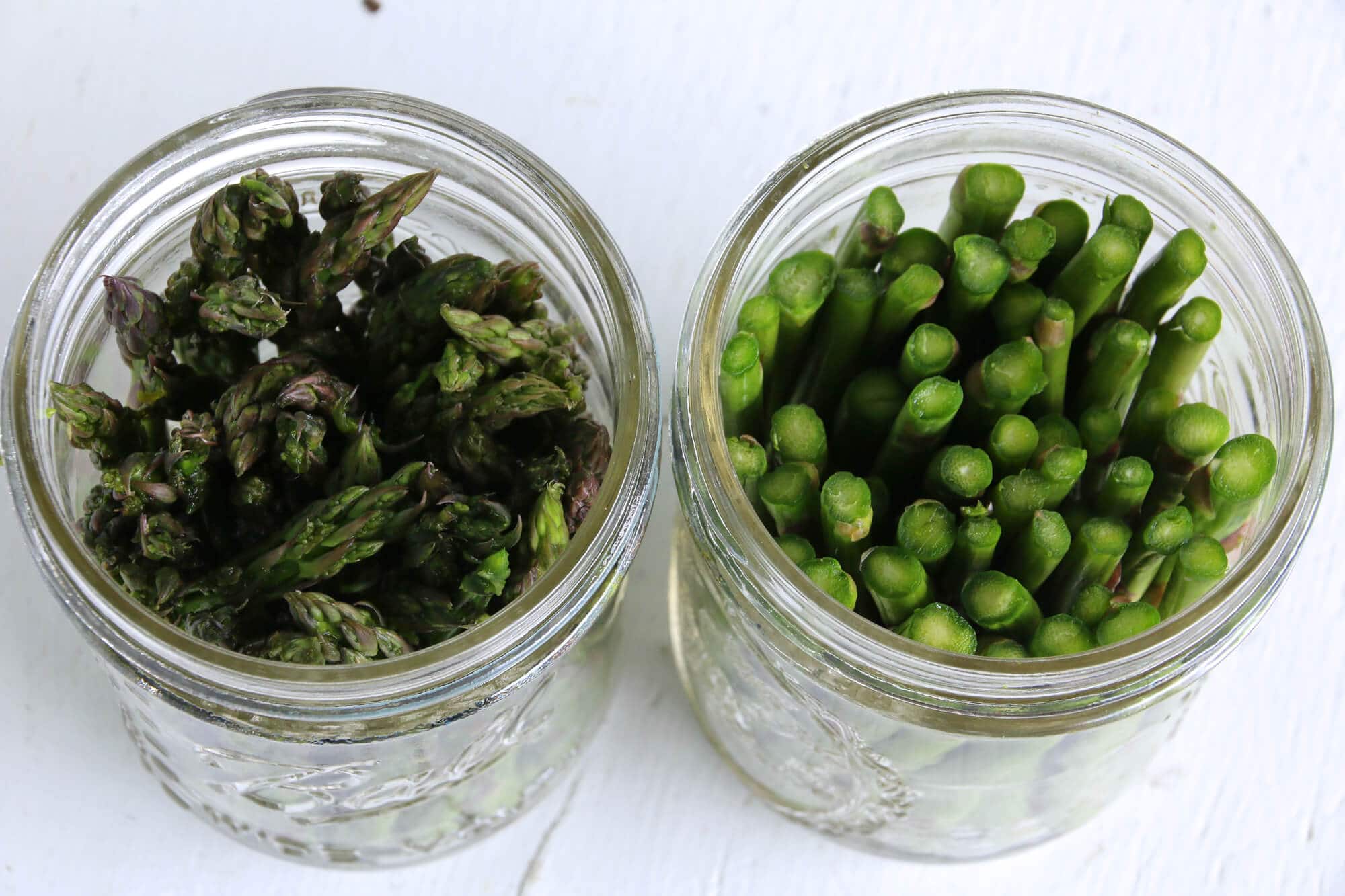
For an extra boost of dill flavor, tuck some fresh dill weed in with the asparagus.
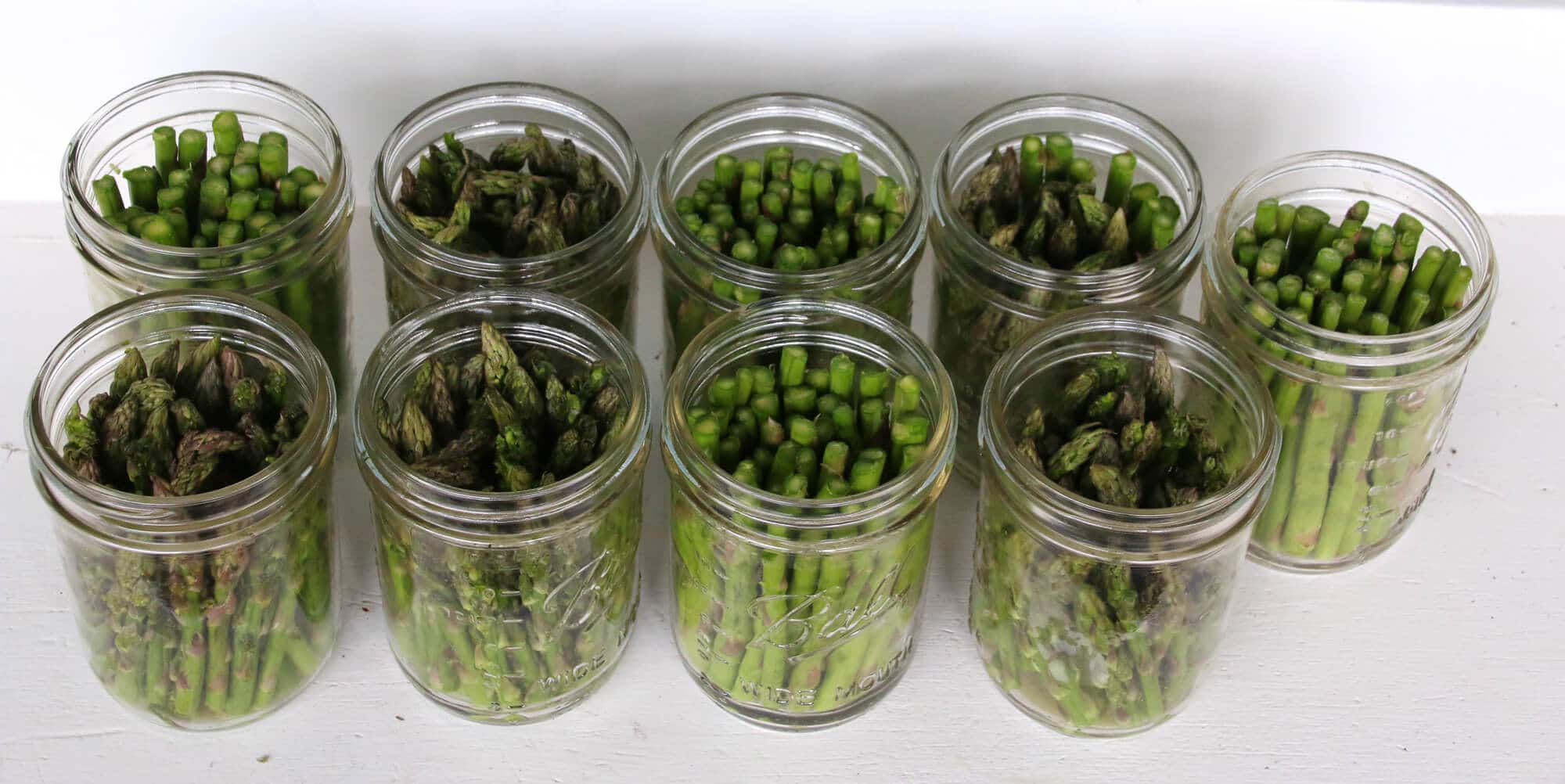
To prepare the brine, add all the ingredients to a medium saucepan and bring it to a boil. Boil for 3 minutes.
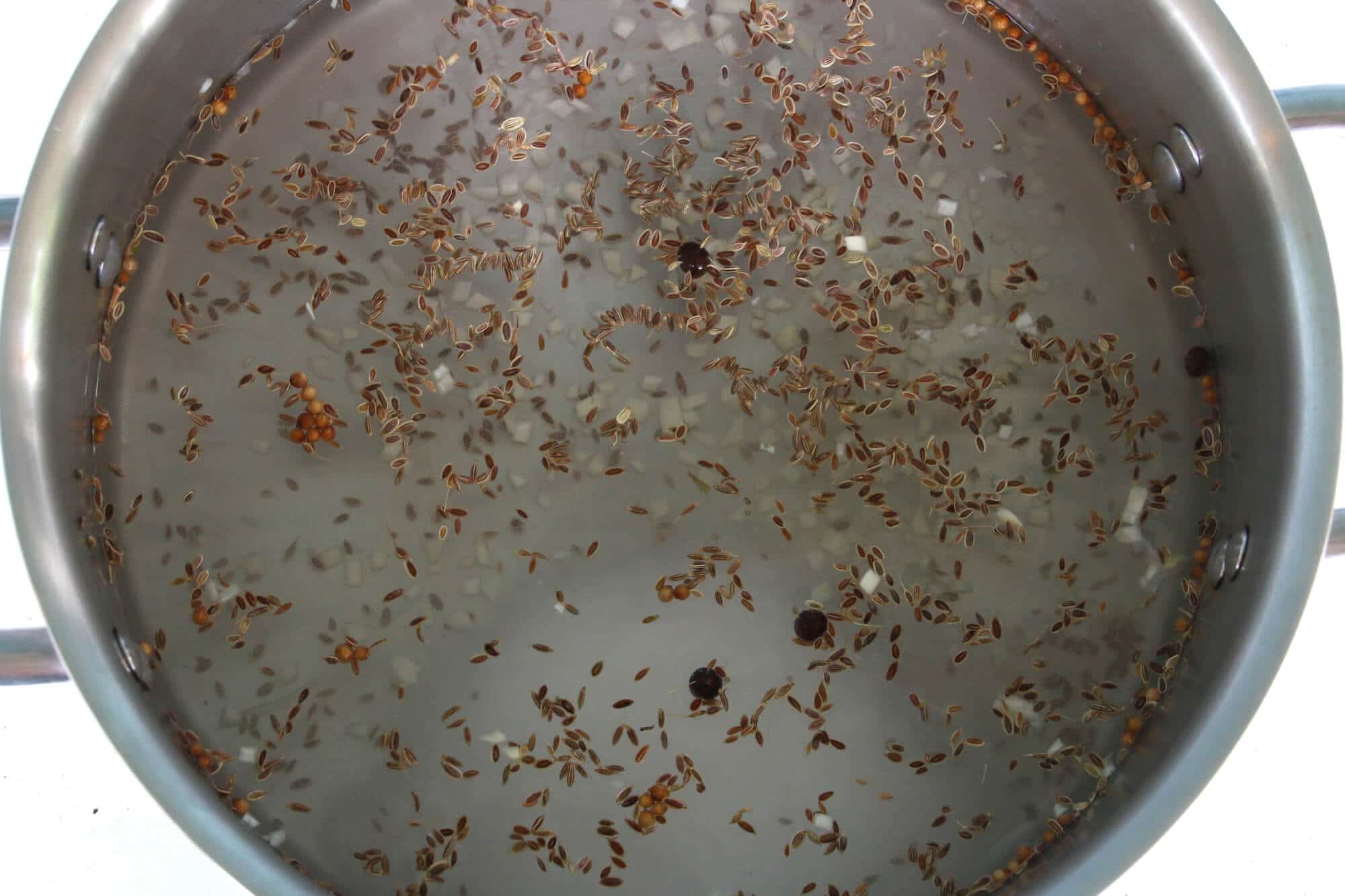
Get ready to pour the hot brine into the jars.
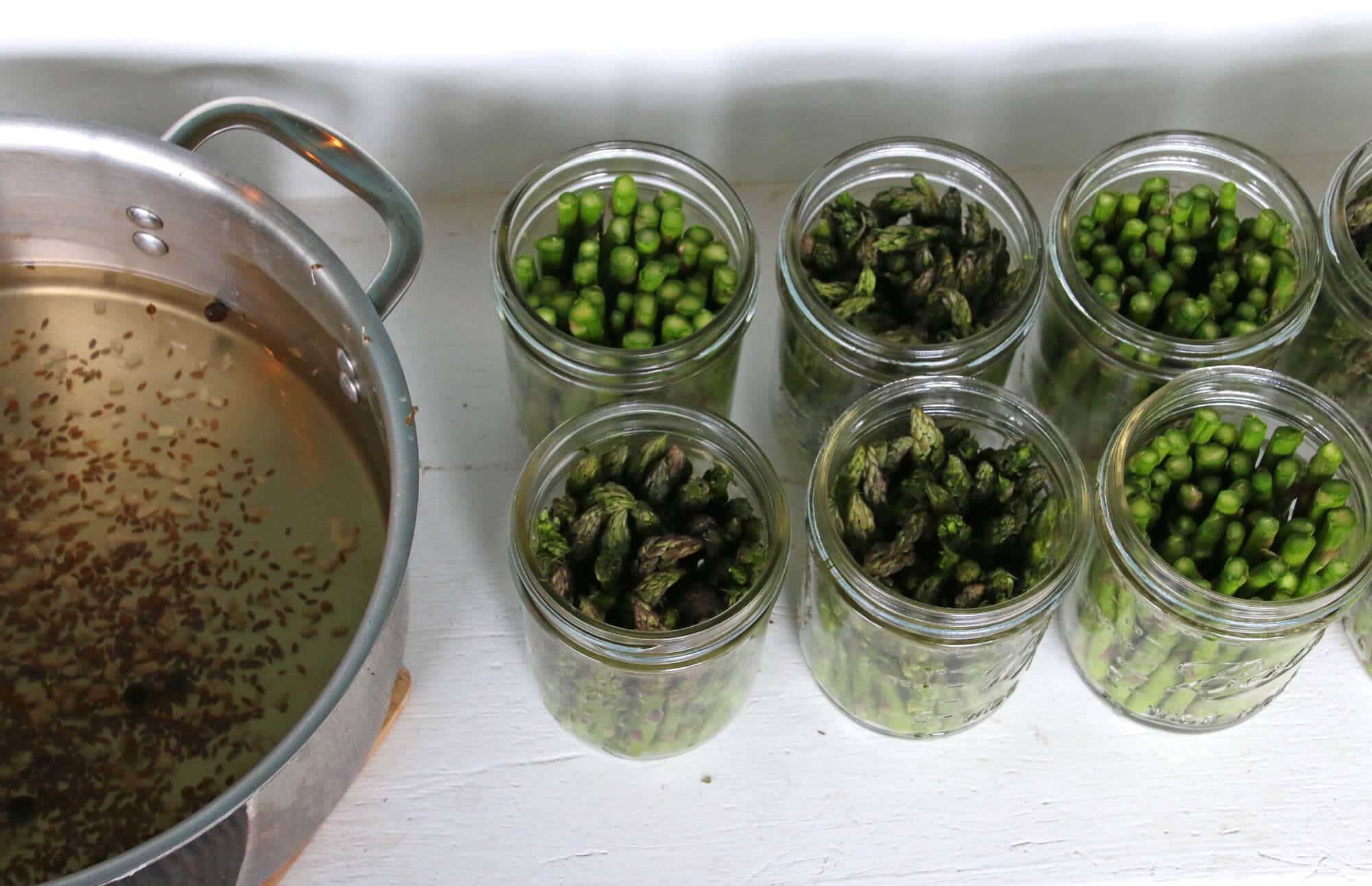
Carefully ladle the hot brine into the jars over the asparagus, making sure to get some of the seeds and garlic in each jar, and leaving 1/4 inch headspace from the top of the jar.
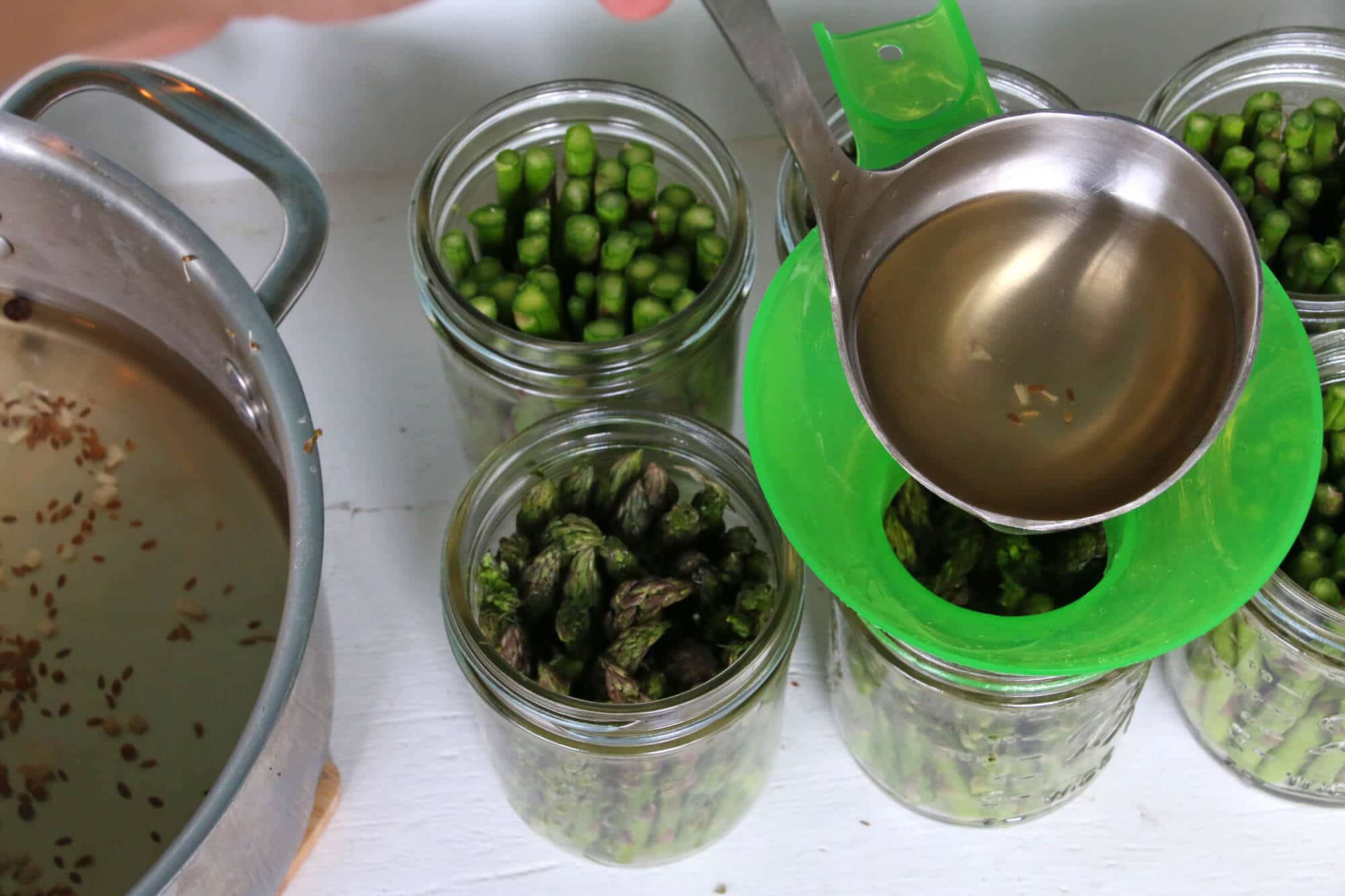
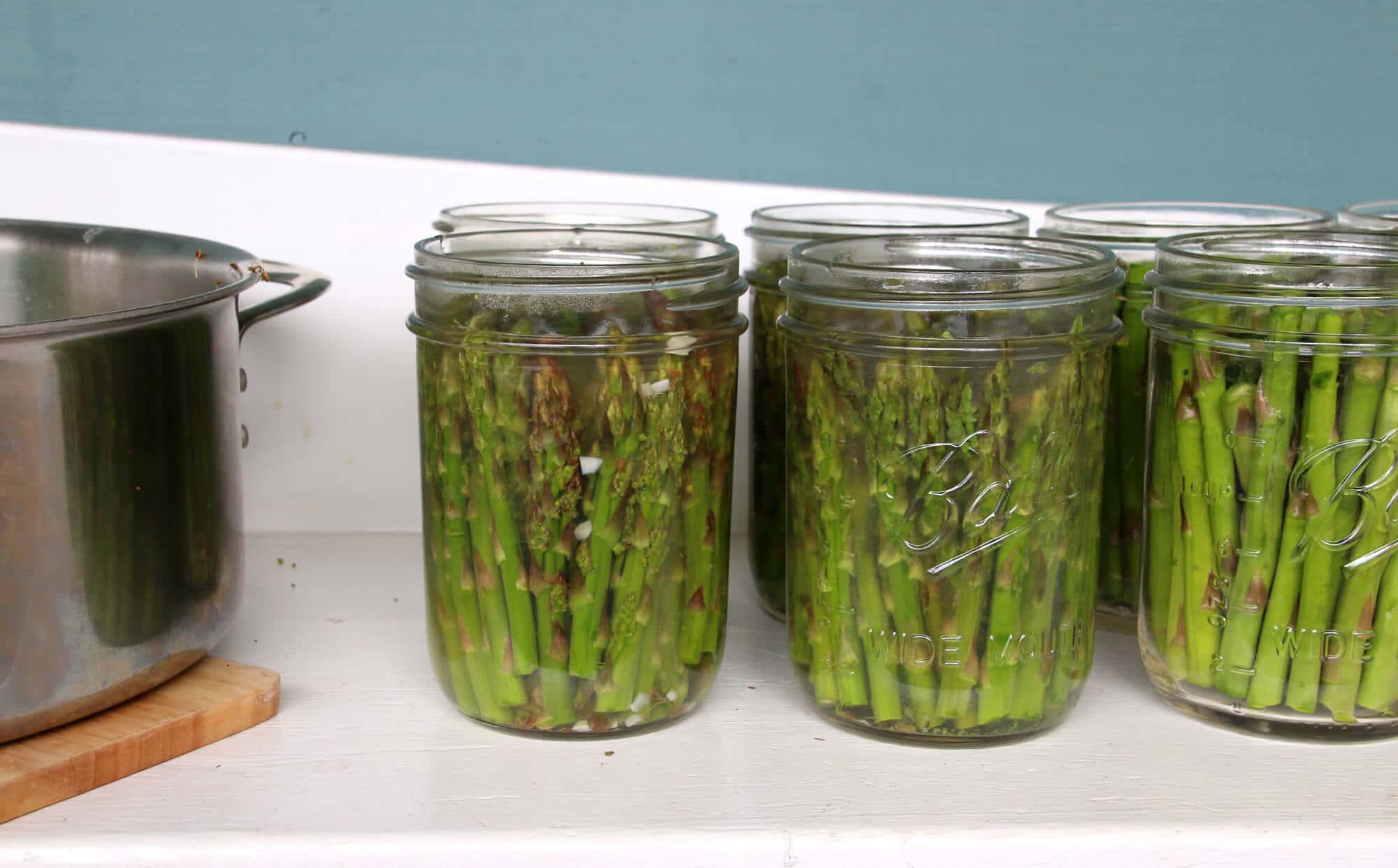
Screw on the lids (I usually don’t can the pickled asparagus because it makes them less crispy, so I use reusable plastic lids). Once the liquid has cooled, refrigerate the pickled asparagus and let it sit for at least a week before using it. Will keep in the fridge for at least a month.
(NOTE: If you really want to can these for long-term storage, immediately after pouring in the hot liquid and sealing the jars, process the jars in a water bath canner for 10 minutes. Remove the jars and let them sit undisturbed for 24 hours before moving them. Choose thicker asparagus. Will keep for up to a year.)
Enjoy!
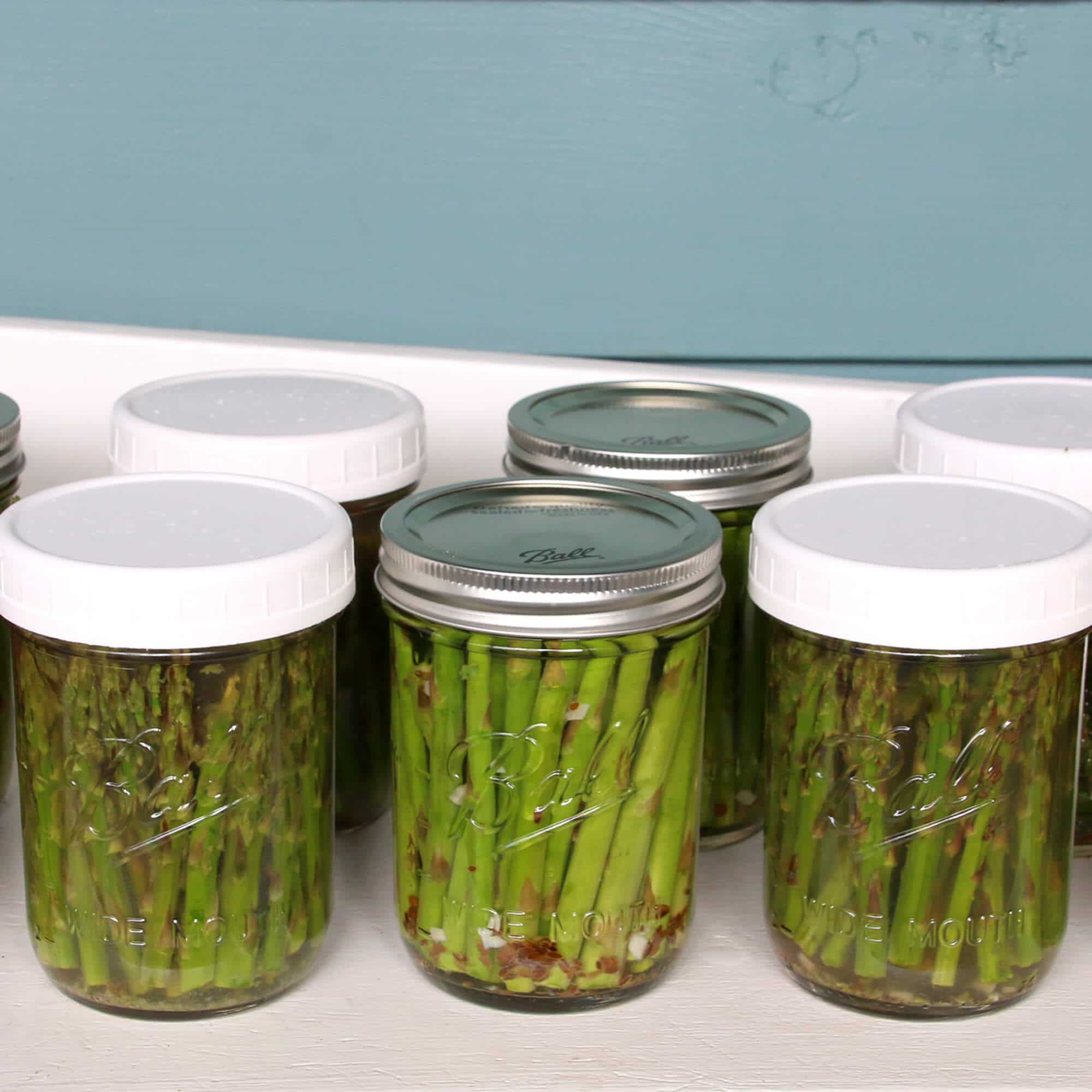
For more pickled goodness be sure to also try my:
- Pickled Banana Peppers
- Pickled Beets
- Pickled Turnips
- Pickled Beans
- Pickled Onions (British Pub Style)
- Pickled Carrots
- Pickled Pepperoncini Peppers
- Pickled Okra
- Pickled Jalapenos
- Giardiniera
- Pickled Peppers
- Bread and Butter Pickles
- Refrigerator Pickles
Save This Recipe
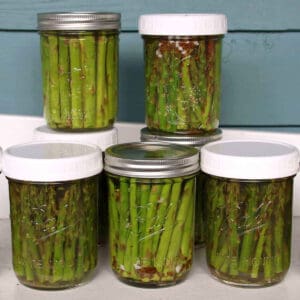
Pickled Asparagus
Ingredients
- 3 pounds fresh asparagus , medium to thick, ends trimmed and discarded
- Some sprigs of fresh dill weed
- For the Brine:
- 2 1/2 cups white vinegar , 5% acidity
- 2 1/2 cups water
- 1/4 cup pickling salt
- 1 tablespoon dill seeds
- 2 teaspoons coriander seeds
- 2 teaspoons mustard seeds
- 1 teaspoon allspice berries
- 2 tablespoons cane sugar (see sugar-free alternative but don’t use if canning)
- 4 cloves garlic , minced
Instructions
- Cut the asparagus to fit the length of whatever jars you’re using, leaving 1/4 inch headspace from the top of the jar. Pack the asparagus into the jars as tightly as you can. Tuck some fresh dill weed in between the asparagus.
- To make the brine, place all the brine ingredients in a medium saucepan and bring to a boil. Boil for 3 minutes.Pour the hot brine into sterilized jars, making sure to get some of the seeds and garlic in each jar, and leaving 1/4 inch headspace from the tops of the jars. Screw the lids on. Once the jars have cooled, refrigerate them for at least a week before eating. Will keep in the fridge for at least a month.
- NOTE: If you really want to can these for long-term storage, immediately after pouring in the hot liquid and sealing the jars, process the jars in a water bath canner for 10 minutes. Remove the jars and let them sit undisturbed for 24 hours before moving them. Will keep for up to a year. Note that canning the asparagus will make them less crispy. Choose thicker asparagus.
Nutrition
Originally published on The Daring Gourmet June 14, 2017



















Kimberley, here in our part of Southeast Alaska it is almost time to harvest the beach asparagus aka: Glasswort!
The beach grass is bland by itself but jamb packed with good nutrients. This time of year, after the long dark has passed, we get a craving for . . . grass man! We need grass.
The locals taught my bride and me how and when to harvest. We were taught to eat em fresh or water bath them in lightly salted water. We will preserve some of them using your recipe here. Yours sounds waaay plenty more better than ours does. Thank you!
How fun, Rusty! We lived in WA State for many years and we had those growing along the coast. We knew them as sea beans or sea asparagus and I think they’re the same thing as glasswort, just different names. We would harvest and saute them in butter or olive oil and serve them as a side vegetable. I really love being able to harvest and use things from the wild. Wishing you guys a successful harvest and happy eating!
can I use 500 ml jars. How many jars will I get with 5 lbs of asparagus
I enjoy pickling asparagus so much ,I always waterbath mine that way it will be ok for a long time, I actually checked on the jars I did last year and they are still perfect, try to find the more mature stems the little skinny ones do not turn out as well as the thicker stems, when they are done it is Bloody Merry time, or just eating time, right out of the jar, have never posted any thing like this before just want every one to know how great the pickles can be, have been canning for over 50 years, and now that I am just by myself it is hard to not want to can for a whole family as I have been doing for so long
Thanks for sharing those insights, Darlene. I agree with your comment about using thicker stems, they’ll stay crunchy longer. Have a wonderful summer!
Darlene, Have you considered teaching how to can? It is an art that is coming back, especially now that people are realizing just how terrible commercially-processed foods are. If you are curious, contact your local county extension office for advice and contacts. I live in the country, and my extension office gave me numbers for 4H and Girl Scouts in the area. The kids loved it. And don’t forget the Boy Scouts! Some of the boys are more intrigued by cooking than some of the girls! Share your knowledge with the young folks. Trust me, many of them will surprise (and delight) you with their questions.
An easy cure for “squishiness” or softening of any pickled or brined product {like dilly beans, the asparagus, okra pickles, etc.} is just to add a large raw grape leaf or 2 to the jars before packing them….learned this trick from Rodale’s “Stocking Up” years ago and it has never failed! Try this with your asparagus or pickles and let everyone know how it turned out.
I use the leaves spread out around the inside of the jars and slices of garlic & fresh dill if used and they are pretty enough as gifts without a bow.
Thanks for the tip, Virginia, I look forward to trying it!
Do I need to Blanche them first ? Thanks
I also add some red pepper flakes for a lot bit of a kick. Delicious.